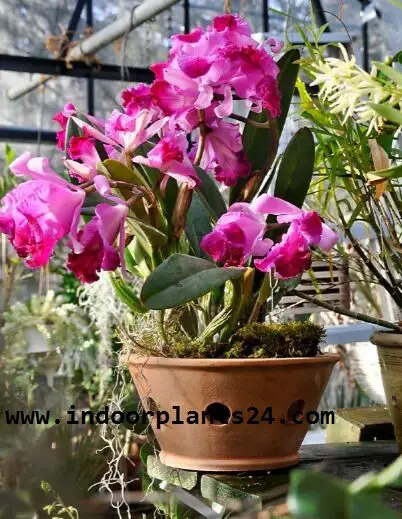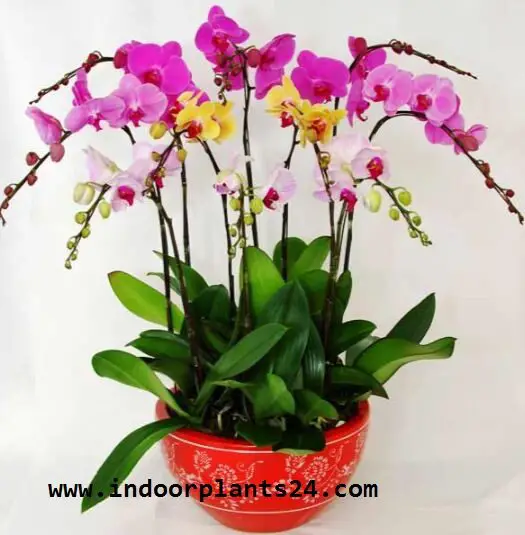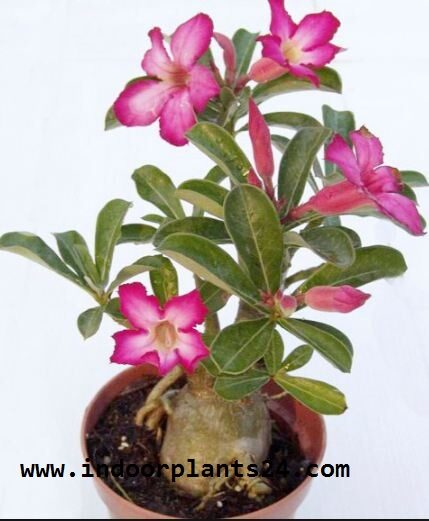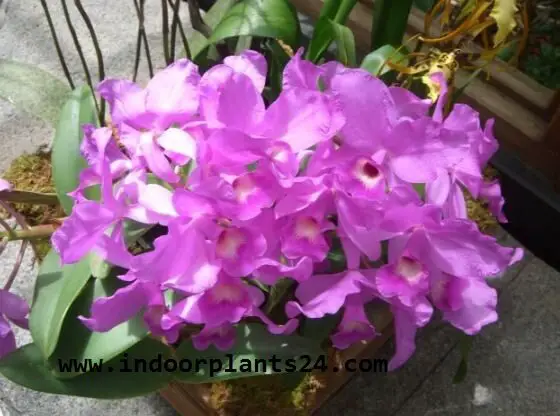Allow the potting mix to dry out between waterings, and give a rest period with very little water for about 6 weeks after flowering. 
Use lime-free water if possible.Old, shriveled pseudobulbs may remain on the plant for several years. They do not need to be removed.

Many species of orchids are becoming increasingly popular as plants to grow in the home, cattleyas among them. They are not as difficult to grow as many people believe, and the exotic, waxy, long-lasting flowers are very rewarding.  There are several species and varieties of cattleya suitable as houseplants. All are epiphytic—in the wild, they do not grow in soil but on the stems of other plants, receiving moisture and nutrients from the atmosphere and from rain.
There are several species and varieties of cattleya suitable as houseplants. All are epiphytic—in the wild, they do not grow in soil but on the stems of other plants, receiving moisture and nutrients from the atmosphere and from rain.  Under cultivation, they are grown in a special orchid potting mix, often consisting of a mixture of bark, sphagnum peat moss, and osmunda fiber.
Under cultivation, they are grown in a special orchid potting mix, often consisting of a mixture of bark, sphagnum peat moss, and osmunda fiber.  Cattleyas produce swollen pseudobulbs with long, strap-shaped leaves. Flowers in shades of pink and red, often splashed with yellow and with a ruffled lip, arise in clusters or singly on long stems. The flowers can be 5in/13cm wide and may last for more than a month; after flowering, plants rest for about six weeks.
Cattleyas produce swollen pseudobulbs with long, strap-shaped leaves. Flowers in shades of pink and red, often splashed with yellow and with a ruffled lip, arise in clusters or singly on long stems. The flowers can be 5in/13cm wide and may last for more than a month; after flowering, plants rest for about six weeks.  Among the species available are Cattleya intermedia, with clusters of rose pink and deep purple blooms in late spring or early summer; and C. labiata, which produces groups of large flowers in shades of pink and red marked with yellow in early winter.
Among the species available are Cattleya intermedia, with clusters of rose pink and deep purple blooms in late spring or early summer; and C. labiata, which produces groups of large flowers in shades of pink and red marked with yellow in early winter.  Pseudobulbs are swollen stem bases from which the leaves and flower stems arise. Wait until the pot is crowded with pseudobulbs before repotting; otherwise, flowering will be adversely affected.
Pseudobulbs are swollen stem bases from which the leaves and flower stems arise. Wait until the pot is crowded with pseudobulbs before repotting; otherwise, flowering will be adversely affected.  Allow the potting mix to dry out between waterings, and give a rest period with very little water for about 6 weeks after flowering.
Allow the potting mix to dry out between waterings, and give a rest period with very little water for about 6 weeks after flowering.
Use lime-free water if possible. Old, shriveled pseudobulbs may remain on the plant for several years. They do not need to be removed.
FACT FILE
ORIGIN Tropical South America; Mexico; West Indies.
HEIGHT To 2ft/60cm.
POTTING MIX Special orchid mix available from specialist growers.
REPOTTING Move into a pot 2in/5cm larger when the pseudobulbs appear crowded.
PROPAGATION After the rest period, divide overcrowded plants into two, using a sharp knife to cut between the pseudobulbs.
KEEPING PLANTS Place repotted plants in medium-light for about a month, until new roots have formed. 
Cattleya spp Orchidaceae CATTLEYA Indoor House PLANT CARE
- Bright light but no direct sunlight.
- Warm conditions, with a minimum temperature of 60°F/16°C.
- Water frequently during the growing period, sparingly during the rest period.
- Mist the plant regularly, especially in temperatures over 70°F/21°C, and stand the pot on a tray of moist pebbles—humidity must be high.
- Give a foliar feed every 3 or 4 waterings during the period of active growth.
ALSO RECOMMENDED Many hybrids and named varieties to have larger flowers than the species.
Among them are Cattleya Bob Betts ‘White Wings,’ a large-flowered, spring-blooming plant, and C. Nigritian ‘King of Kings,’ which produces many- flowered clusters of splendid lavender-colored blooms. C. ‘Guatemalensis,’ with small salmon pink flowers in spring, is a natural hybrid.
Flowers consist of three sepals and three petals, the lower one of which is tubular and frilled to form a lip. Remove flowers as they fade.
The hybrid ‘Violacea is a charming small- flowered cattleya. Its pale-colored flowers are borne in abundance and it produces 3 or 4 blooms to a stem.
